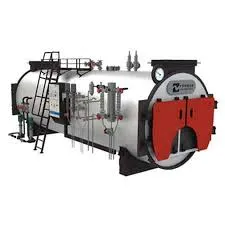best steam boiler heat exchanger
Best Steam Boiler Heat Exchanger An Essential Component for Efficient Energy Transfer
Steam boilers play a crucial role in various industrial processes, including power generation, chemical manufacturing, and heating applications. One of the key components that ensure the efficiency and effectiveness of a steam boiler system is the heat exchanger. In this article, we will explore the significance of heat exchangers in steam boilers, the different types available, and some best practices for their selection and maintenance.
The Role of Heat Exchangers in Steam Boilers
Heat exchangers are devices designed to transfer heat from one medium to another, without both mediums coming into direct contact. In the context of steam boilers, heat exchangers are used to transfer heat from the combustion gases to the water in the boiler, producing steam. This process is critical because it directly affects the thermal efficiency and overall performance of the boiler system.
A well-designed heat exchanger maximizes heat transfer, minimizes energy losses, and enhances the safety and reliability of the steam boiler system. Consequently, selecting the right type of heat exchanger is fundamental to optimizing energy efficiency and ensuring smooth operational performance.
Types of Heat Exchangers
There are several types of heat exchangers commonly used in steam boilers
1. Shell and Tube Heat Exchanger This type consists of a series of tubes, with one set carrying the hot fluid (usually the combustion gases) and the other carrying the cold fluid (water). Shell and tube heat exchangers are widely used due to their robust design and ability to handle high pressures and temperatures.
2. Plate Heat Exchanger Comprising multiple thin plates arranged in a frame, this type offers a compact design with a high surface area for heat transfer. Plate heat exchangers are ideal for applications requiring efficient heat recovery, as they can achieve a higher thermal efficiency compared to other types.
3. Air-Cooled Heat Exchanger In this design, air is used to cool the fluid circulating through the heat exchanger. Air-cooled heat exchangers are often utilized in locations where water is scarce or where it is impractical to use water cooling methods. They are often more energy-efficient and environmentally friendly.
4. Double-Pipe Heat Exchanger This is the simplest form of heat exchanger, consisting of a pipe within another pipe. It's primarily used for smaller applications, and its straightforward design makes it easy to maintain.
Selecting the Best Heat Exchanger for a Steam Boiler
When selecting a heat exchanger for a steam boiler, several factors must be considered to ensure maximum efficiency
1. Temperature and Pressure Ratings Ensure that the heat exchanger meets or exceeds the temperature and pressure requirements of your steam boiler application.
best steam boiler heat exchanger

3. Efficiency Evaluate the heat transfer efficiency of the heat exchanger. Higher efficiency means better energy savings and reduced operating costs.
4. Maintenance Needs Consider the ease of maintenance and cleaning. Some heat exchangers require more frequent cleaning than others, which can impact overall downtime and operational costs.
5. Cost While it’s essential to invest in quality, the initial cost should be balanced with long-term operational savings and reliability.
Maintenance Practices for Heat Exchangers
To ensure that a heat exchanger operates at optimal efficiency throughout its lifecycle, regular maintenance is essential. Here are some best practices
1. Routine Inspections Conduct regular inspections to identify any signs of wear, corrosion, or scaling that could affect performance.
2. Cleaning Regularly clean the heat exchanger to remove any buildup of deposits that can inhibit heat transfer.
3. Leak Monitoring Continuously monitor the system for leaks or signs of fluid mixing, which can indicate a failure that must be addressed immediately.
4. Temperature and Pressure Checks Regularly monitor temperature and pressure gauges to ensure the heat exchanger is operating within recommended ranges.
5. Professional Servicing Schedule periodic professional servicing to assess the condition and performance of the heat exchanger and boiler system.
Conclusion
The heat exchanger is an integral part of any steam boiler system, significantly influencing its efficiency and effectiveness. With proper selection, regular maintenance, and a focus on best practices, operations can minimize costs, enhance performance, and extend the lifespan of both the heat exchanger and the steam boiler itself. By prioritizing these factors, industries can harness the full potential of their steam systems, leading to improved productivity and sustainable practices.
-
Best China Steam Boiler Price for Efficient Industrial HeatingNewsJul.22,2025
-
Top Electric Steam Boiler Manufacturers - High-EfficiencyNewsJul.21,2025
-
High-Efficiency OEM Steam Boilers: Durable & Cost-Saving SolutionsNewsJul.21,2025
-
Skid Mounted Thermal Oil Boiler | Compact & Energy-Efficient HeatingNewsJul.20,2025
-
Industrial Steam Boiler Corporation - Reliable Industrial Boiler Manufacturer & SupplierNewsJul.08,2025
-
High-Efficiency Steam Boiler Heat Exchanger Supplier & Factory Durable Products for IndustryNewsJul.08,2025

